#dipnoi
Explore tagged Tumblr posts
Text

A Cretaceous lungfish tooth plate of a Neoceratodus africanus or Ceratodus sp. from the Elrhaz Formation in Gadoufaoua, Niger. These giant Mesozoic lungfish would have been prey for genera like Suchomimus tenerensis and Sarcosuchus imperator.
#fish#lungfish#dipnoi#fossils#paleontology#palaeontology#paleo#palaeo#neoceratodus#ceratodus#ceratodontidae#neoceratodontidae#cretaceous#mesozoic#prehistoric#science#paleoblr#ネオケラトドゥス#ケラトドゥス#ネオセラトーダス#セラトーダス#ハイギョ#化石#古生物学#ケラトドゥス科
131 notes
·
View notes
Text
Round 2 - Chordata - Dipnoi




(Sources - 1, 2, 3, 4)
Dipnoi is a class of Sarcopterygiian fish commonly called “lungfish”. While widely distributed since the Early Devonian, today only 6 species remain. They are the closest living relatives to tetrapods (amphibians, reptiles, and mammals).
Like other Sarcopterygiians, lungfish have lobed, bony fins and a well-developed internal skeleton. True to their name, they have a highly specialized respiratory system which includes lungs, subdivided into numerous smaller air sacs. Most extant lungfish species have two lungs, with the exception of the Australian Lungfish (Neoceratodus forsteri), which has only one. The Australian Lungfish can breathe through its gills without needing air from its lung, but in all other species the gills are too atrophied to allow for adequate gas exchange. Lungfish have unique dentition, bearing fan-shaped tooth plates called odontodes, which are used to crush hard shelled organisms. Some groups have ridges on these tooth plates that form occluding blades. They are omnivorous, feeding on fish, insects, crustaceans, worms, mollusks, amphibians, and plant matter. African and South American Lungfish are capable of surviving seasonal drying-out of their habitats by burrowing into mud and estivating throughout the dry season.

(own work)
Propaganda under the cut:
The Australian Lungfish has existed in Australia for at least 100 million years, making it a true living fossil and one of the oldest living vertebrate genera on the planet. It is the most primitive surviving member of the ancient Dipnoi lineages.
The Marbled Lungfish's (Protopterus aethiopicus) genome contains 133 billion base pairs, making it the largest known genome of any vertebrate. The only organisms known to have more base pairs are the amoeboid Polychaos dubium and the flowering plant Paris japonica at 670 billion (possibly) and 150 billion, respectively.
The Spotted Lungfish (Protopterus dolloi) can aestivate on land by surrounding itself in a layer of dried mucus.
An Australian Lungfish named “Granddad” at the Shedd Aquarium in Chicago lived to be 109 years old, before he had to be euthanized due to an age-related decline in health. The current oldest Australian Lungfish is now “Methuselah”, who lives at the California Academy of Sciences, and is around 100 years old. Methuselah has been described as "mellow" by her keeper. She is also noted to like belly rubs, back rubs, and fresh figs.
Australian Lungfish are one of the cutest animals on the planet and I want a life-sized plushie/body pillow of one
86 notes
·
View notes
Text
There is no such thing as a fish and on Neptune it’s raining diamonds.
These are facts that make the absurdity of this big old universe more clear.
This could be a comfort to me. It should stop me from taking myself too serious. It should encourage me in embracing the fullness and mysteries of life INCLUDING myself. I want it to be my “prescription for hope”.
I’m not there yet. But I truly am trying.

#Lulu Miller#Why Fish Don’t Exist#just finished this great book#trying to hold on to hope#literature#personal#lungfish#dipnoi
8 notes
·
View notes
Text

Almost got hit with the wizard classic
a wizard is going to turn you into a random animal! whether you like it or not! how nice of them! spin the wheel to find out which class your new species belongs to (and then probably do a google).
27K notes
·
View notes
Note
can we get some dipnoi love i love these little guys
Of course, our fishy lobe-fin cousins deserve some love <3
Daily fish fact #591
Gilled lungfish!

They're notable for having three pairs of external gills which they retain into adulthood, and also for being the smallest lungfish species! Despite the gills, they're still obligate air breathers and can handle being buried in dried mud for months just like the other lungfishes.
#i find it very interesting how much they look like aquatic salamanders!#we're all just fish... all of us tetrapods....#fish#fish facts#fishfact#fishblr#biology#zoology#lungfish#gilled lungfish#asks#anonymous#anon#anonymous asks
266 notes
·
View notes
Text

they hate her for her dipnoi lung-possessing swag. they want to confine her to water-breathing fish stereotypes
25 notes
·
View notes
Text
hello! this post is going to be a little different from anything i've written before, because today we're looking at fish.
this fish, to be exact.


this fish is one of the many prehistoric creatures we see in minato's dreams from ch. 48. the translation team did a wonderful job identifying several creatures and explaining them in general, but i haven't seen any specific discussion about this one yet. so i figured i'd talk about what i think this fish is and what i think it represents.
the rest of this post will be under the cut, because there's lots of images and it's going to get quite long. here we go!
so what fish is this?
let's start by looking at these three images for reference:



(you may have noticed that the head shape of the fish in the first image is a bit different from the one in the second. however, since the rest of their bodies are very, very similar to each other, i'm assuming that they are intended to be the same fish and the head shape of the second one is closer to the 'correct' bodyplan.)
to begin with, we can see that the fins are attached to the body with these fleshy lobes, meaning that this fish is probably a "lobe-finned fish" belonging to the clade Sarcopterygii.
Sarcopterygii can be split up into three more clades:
Actinistia - the coelacanths and their close relatives
Dipnoi - the lungfishes and their close relatives
Tetrapodomorpha - the tetrapods (four-limbed vertebrates) and their close relatives
just based on morphology, we can narrow it down to Actinistia. so coelacanths! the thing with coelacanths is that one of their most notable characteristics is their weird tail:

this is a replica of the West Indian Ocean coelacanth (Latimeria chalumnae), which is one of the two species alive today. here you can see that the tail is split up into three lobes: the top and bottom lobes are the same width and length, while the one in the middle is smaller and protrudes further out. their tail is diphycercal, which means that the vertebrae extend all the way to the tip of the tail and the tail itself is symmetrical.
both living species of coelacanth have a diphycercal tail. in fact, almost every single genus in Actinistia has a diphycercal tail. but our fish doesn't. its tail has only two lobes, where the bottom one is much bigger than the top, which is a heterocercal tail. why is that?
it turns out you have to look really, really, really far back in Actinistia to find fish without diphycercal tails. and when you look back far enough...
you find Miguashaia, a fish that lived during the Devonian period 365 million years ago. a fish that also happens to be the most primitive coelacanth we know.

in other (slightly more overgeneralizing) words, it's the oldest coelacanth, so old that it doesn’t even have one of the main features we now associate with coelacanths. neat!
okay. why do i care about this fish?
isn't it odd that we see this same fish following minato for multiple pages during the dream sequence, when most of the other creatures only appear for a single panel or two?

it's especially weird by the time we get to the reunion with nagiko, when we stop seeing any other prehistoric creatures in the foreground (save for the basilosaurus skeleton). but this fish still stays next to minato, and neither him nor nagiko seem to acknowledge its presence. it... doesn't really do anything either. it just hangs around at minato's side or right behind him, like it's watching over him.



doesn’t it look a bit out of place in this scene?
and then what’s stranger is that we see it again later on. when haruno voices his concerns about minato's mental state in ch. 50, the implication being that he thinks minato might follow his wife to the grave, we get this panel to go with it:

there’s the whale skeleton and lion’s mane jellyfish, both of which have been previously used to represent nagiko. there's minato, reaching out to the jellyfish with the hand he wears his wedding ring on. and then there’s... the fish again. as before, minato doesn't interact with it at all. in fact, his back is completely turned to it, but the fish is still continuing to watch him from afar.
i already had some suspicions even before ch. 50, but this panel is the one that made me go "oh, okay, so that's definitely supposed to be a person, right?".
nagiko isn't the only character in the story who's connected to a particular deep sea creature or two: there's nagisa with the flapjack octopus, shizuka with the basket star, ryou with the cookiecutter shark, etc. we haven't had anyone with a prehistoric species yet, let alone a prehistoric coelacanth, but we do have someone who's depicted with modern day coelacanths pretty frequently:


so who would be a likely candidate for its ancient relative: a fish that's distinct enough from its kin to be recognized as a separate entity, while still sharing many visual similarities?
who's the person that's the most likely to come to mind whenever minato thinks of nagiko? a person who had always been at his side in his younger days? a person that minato can't truly see or talk to in his dreams, because he remains out of his reach?

a person who still continues to haunt him, even now?

wonder who that could be.
#mine#deep sea aquarium magmell#long post#it's... fish analysis and then some. sorry for mentioning [redacted] for the third time in the past few weeks#he's a load bearing wall of a character & so is [redacted2] and the fact that they'll be in the spotlight soon is making me jittery#hence all the posting. i've been waiting a while for this (gently taps the blog url)#but i hope this post makes sense and doesn't sound too outlandish. the fishposting part was also fun to look up stuff for
7 notes
·
View notes
Text
Apocalypse Jargon: Magnetic Loogaboo
Cursed leakage began conceptually scheming with high authorities of autonomous kingdoms and empires in High Gondwana continent. Creating highly intelligent Foraman mutants, 7 main kingdoms had fallen into extreme authority of their respective dynasties. The extreme conflict they have created brought life to low animistic vengeful deities allowing tormented souls to flow through pink sand. Princess Lunae of the Syzygy, a foraman mutant, once had strolled in the darkest midnight and had an epiphany whilst walking through the rainbow coloured beach. She vanished... and alongside her, was a devastating equatorial current that nearly flooded the land between Pangea and Gondwana.
A desperate human boy running away from the remains of his town, overrun by arthropleura and pulmonoscorpius. His angelic retinal rods could see the levelled town drowned in glitched aura. He meets a strange girl in the far inland coal forests, adorned with a dress made of plastiglomerates, dyed crystals and metamorphic peat, it's Lunae.. grinning with blood irises...
Spoon walks through the shadowed plains, removed of life, with peculiar constellations above and flooded in mundane dark matter. The world seems as infinite as it was before, an indivisible whole. Her chainnon immediately fired on a duo from behind. Lunae and Basho dodged and immediately asked her to leave the premise as soon as possible. Glitched Arthropodians charged through the flooded plains, as two other armies charged in. Anarchous Necrozoans and Empire Foramans. Lunae clotheslined Spoon in the chest, and dragged her away through the middle troposphere. Spoon didn't feel pain, but utterly bemused. A Giant explosion propelled them even farther than their airjets could. Spoon was given fried dipnoi omurice, as Lunae and Basho sat down in complete exhaustion. Spoon, could not even begin to object on 5W1H as there are no meaningful inferences that can be derived other than friendly instinct. Their base is boulders deep in some random coal forest, littered with carbonate clockwork and plastic tubes. Basho and Lunae then curiously investigated her chainnon and foo-gun, specifically her unknown radiation, Spoon is red shy. The only thing they can conclude is that her radiation can increase electrical current in circuits. Lunae and Basho jumps in excitement, and shows Spoon their miniature tachyonic teleporter, teleporting fruits, fish bones and wooden dolls through them into the past and future. Spoon only tilted her head in confusion. They then hear intentional knocks on their base gate and both of the base runners are in cold sweat. Basho opens the gate to find a gang of humans demanding their luck money. Lunae explodes a hole in the emergency exit and drags Spoon by the collar with her, Basho follows as the gang tries to use their tools against them. They were all wooden toys...
Basho briefly explains that he is a rogue luck accountant, exploiting the multiple entropies running their world and deterministic deities to run an economy of luck. Both of them acknowledged that the world has been overrun by a disease that turns fauna into living rot, hemophilic leprosy, and cancerous growths. Spoon lightly weeps, under the belief that she had been to blame. Both of them comfort her. Floating eyeballs followed their path in the starry sky, as air currents begin to show a painterly color. A witch in their presence. Three of them turn around and face the Witch of Insanity, it greets them by making their root chakras glow, and throwing mundane bose-einstein condensate danmaku at destructive interference with their chakras. This is just a game isn't it.. Spoon turns around and begins cancelling off and attacking its danmaku with her chainnon and foo-gun. The fight lasts for quite a while, enough to nauseate Basho, but Lunae seems to be having fun. The Witch of Insanity had a slight cut on its arm from one of Spoon's mixed astronomical pasta bullet, and bid them farewell.
Spoon for the first time sheepishly explains her mental condition, both of them immediately shot her down before she could utter a sentence. They already know about her billion ragements unconscience and alien electrozom microbes in her head, and that is precisely why they need her to save this odd civilization, at least... the good parts of it. As of right now, they are flying through the atmosphere with the background of space... and both of them realized the lack of an introduction. Basho, is born a hybrid angel and human, he wears green goggles and born from an unnamed town now conquered by the arthropodians. Lunae, is a disgraced princess of Syzygy, a kingdom deemed relatively ancient to present day, and has since dissolved. Lunae explains that they are united by a shared disdain towards the forced self-destructive status quo, and the invasive ecological niche imposed upon them. Basho scolds Lunae, although what she said is a trillion percent true, he can't help shake the fact that she's awfully pessimistic about the current situation. They banter for a while before asking for Spoon's opinion.
She's snoring.
2 notes
·
View notes
Text
(part 2)




15. Sauropsida, ca. 23,000 species: all "reptiles" (including the greater group of lizards and snakes, as well as turtles and crocodiles) and birds
(We've reconstructed Amniota, with about 29,000 species, all of whom surround their embryos with an amniotic membrane -- whether in an egg or in the womb -- and have skin made waterproof by keratin.)


16. Lissamphibia, ca. 8000 species: all living amphibians, including frogs and toads, salamanders and newts, and caecilians
(We've reconstructed Tetrapoda, land vertebrates, with about 37,000 species total; they started out with two pairs of fin-derived limbs with five toes each, though many species have lost some of them.)

17. Dipnoi, 6 species: lungfish

18. Rhipidistia, 2 species: coelacanths
(We've reconstructed Sarcopterygii, a clade distinguished by the presence of gut-derived lungs and limbs with bony lobes, although modern coelacanths stopped breathing with lungs and modern lungfish reduced thir fin lobes.)

19. Actinopterygii, ca. 32,500 species: ray-finned fishes, meaning the vast majority of all fishes on Earth.
(We've reconstructed Osteichthyes, with about 70,000 species, distinguished by the next group by a completely bony skeleton)


20. Chondrichthyes, ca. 1300 species: sharks, rays, and ratfish, all with a cartilage-based skeleton
(We've reconstructed Gnathostomata, most distinguished by having hinged jaws with teeth, as well as a urinary bladder and myelin around their nerves.)


21. Cyclostomi, 129 species: lampreys and hagfish
(We've reconstructed Vertebrata, with about 71,000 species, which share a bony vertebral column, a three-part brain protected by cartilage plates, segmented trunk muscles and non-segmented gonads, red blood, and eyes with lenses.)

22. Tunicata or Urochordata, ca. 3100 species: sea squirts and salps

23. Cephalochordata, 30 species: lancelets
(We've reconstructed Chordata, with about 74,000 species, with a body built aound a fibrous notochord, a hollow spinal cord with a brain-like swelling at one end, and a pharynx with gill slits -- or structures derived from such.)
(to be continued)
Living species listed according to how closely related they are to us
(part 1; pictures from Wikipedia, species numbers mostly from Catalogue of Life)


Genus Pan, 2 species: chimpanzee, Pan troglodytes; bonobo, Pan paniscus. Our closest relatives.

2. Genus Gorilla, 2 species: western gorilla, Gorilla gorilla; eastern gorilla, Gorilla beringei
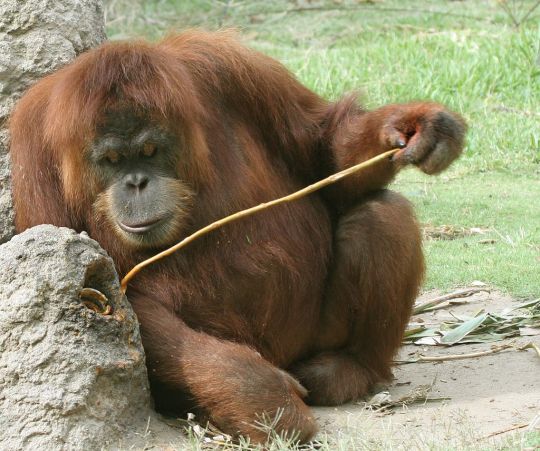
3. Genus Pongo, 3 species: orangutans
(We've reconstructed family Hominidae, the great apes, with a total of 8 species.)

4. Hylobatidae, 20 species: gibbons and siamangs
(We've reconstructed superfamily Hominoidea, apes, with 28 species total. We obviously share with them a great deal of physical similarities, including a lack of tail, a chest wider than it's deep, highly mobile shoulders, and very long childhood that requires extensive parental care and teaching.)
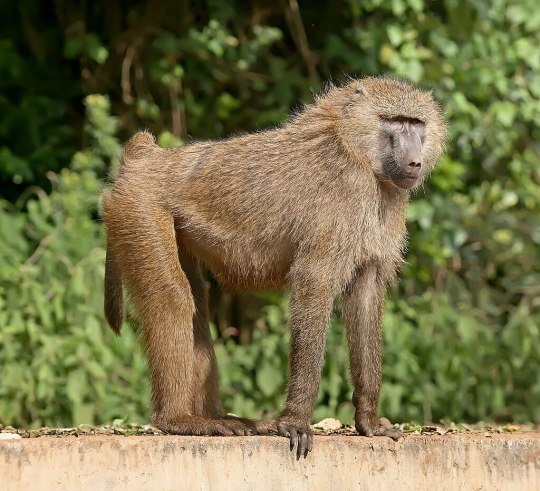

5. Cercopithecoidea, 161 species: the "Old World monkeys" of Africa and Asia, including macaques, baboons, vervets, langurs, colobuses, and proboscis monkeys
(We've reconstructed clade Catarrhina, which among other things all share 32 teeth in the same pattern, nostrils opening downward, and never having a prehensile tail, unlike...)
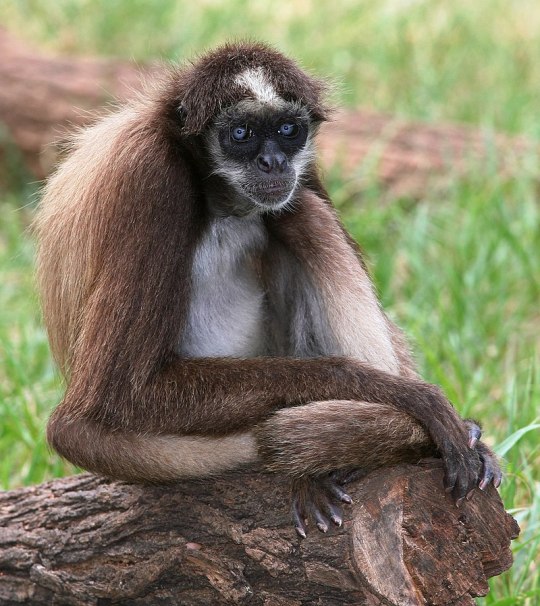

6. Platyrrhini, 182 species: the "New World monkeys" of South America, including spider and howler monkeys, marmosets, capuchins and squirrel monkeys
(We've reconstructed Anthropoidea, which share flat fingernails, a fused upper lip -- :) instead of :3 -- and a single-chamber uterus undergoing a menstrual cycle)

7. Tarsiiformes, 14 species: tarsiers

8. Strepsirrhini, 143 species: "prosimians", including lemurs, indris, bushbabies, lorises, and the ayé-ayé
(We've reconstructed order Primates, with about 500 species, which among other things share an omnivorous diet, a relatively large brain, fully prehensile hands, and bony eye orbits.)
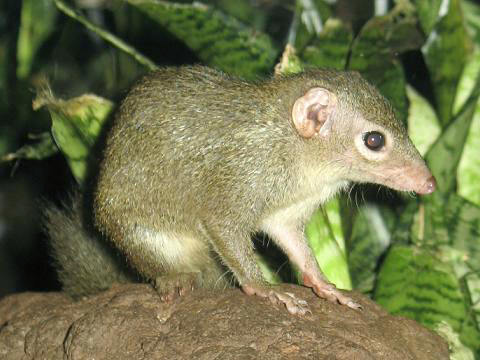

9a. Scandentia, 23 species: tree shrews 9b. Dermoptera, 2 species: flying lemurs
Unclear which of these two groups is closest to Primates, or whether they form a clade of their own (Sundatheria). This and the next few links are based mainly on molecular evidence.

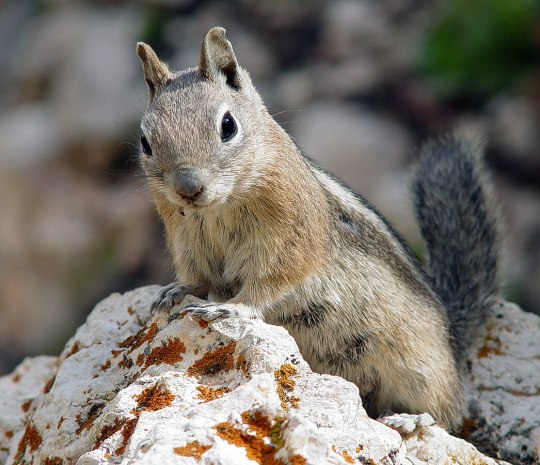

10. Glires, ca. 2500 species: Rodentia (including mice, rats, squirrels, marmots, beavers, porcupines, guinea pigs, and capybaras) + Lagomorpha (rabbits, hares, and pikas)
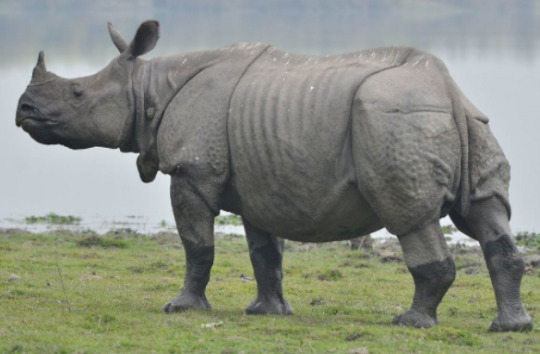

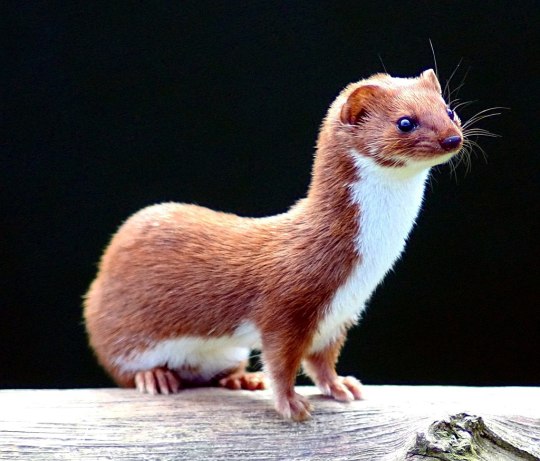
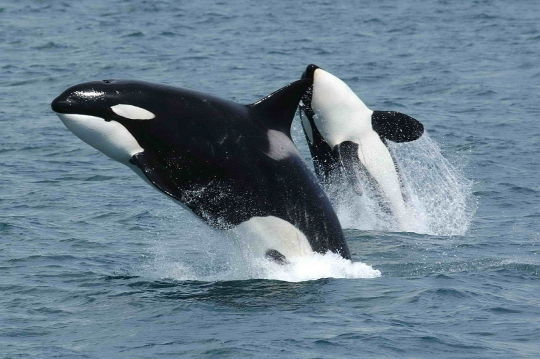
11. Laurasiatheria, ca. 2700 species: a very large and diverse group of mammals, including Carnivora (cats, dogs, hyenas, bears, weasels, seals and sea lions), Cetartiodactyla (ruminants, pigs, camels, hippopotami, whales, and dolphins), Perissodactyla (horses, tapirs, and rhinos), Chiroptera (bats), Pholidota (pangolins), Eulipotyphla (moles, shrews, and hedgehogs), and so on


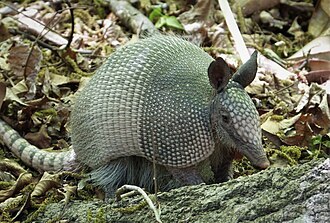

12a. Xenarthra, 37 species: sloths, anteaters, and armadillos 12b. Afrotheria, 88 species: elephants, manatees, ardvaarks, hyraxes, tenrecs and golden moles
Again, these two may branch off in any order from our line.
(We've reconstructed Placentalia, the placentate mammals, with about 5900 species total.)
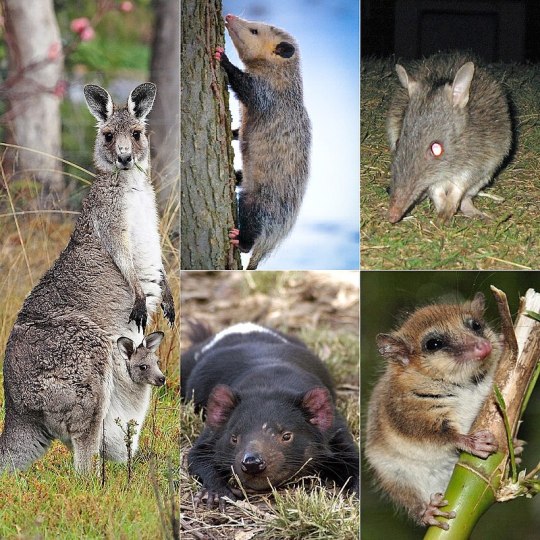
13. Marsupialia, 335 species: possums and opossums, kangaroos, wallabies, koalas, wombats, bandicoots, Tasmanian devils, and so on
(We've reconstructed Theria, a clade of mammals distinguished by having mammaries with nipples and XY sex chromosomes.)

14. Monotremata, 5 species: the platypus and echidnas
(We've reconstructed Mammalia, mammals, with about 6200 species total. Many distinguishing features, including milk glands, middle ear bones, isolating fur with various skin glands, and warm-bloodedness, a four-chambered heart, and differentiated teeth.)
(to be continued)
98 notes
·
View notes
Photo

West African lungfish (Protopterus annectens)
Photo by Michel Gunther
#west african lungfish#lungfish#protopterus annectens#protopterus#protopteridae#lepidosireniformes#dipnoi#dipnomorpha#vertebrata#chordata
158 notes
·
View notes
Text
Ceratodus
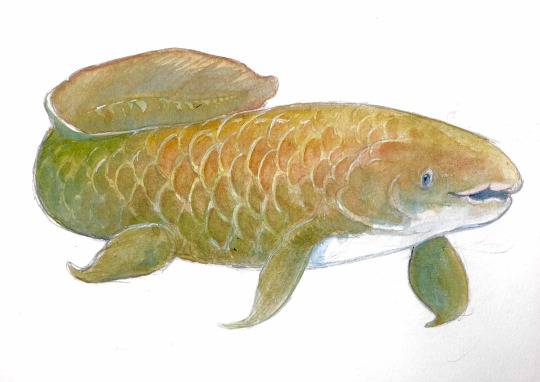
By Ripley Cook
Etymology: Horn tooth
First Described By: Agassiz, 1837
Classification: Biota, Archaea, Proteoarchaeota, Asgardarchaeota, Eukaryota, Neokaryota, Scotokaryota, Opimoda, Podiata, Amorphea, Obazoa, Opisthokonta, Holozoa, Filozoa, Choanozoa, Animalia, Eumetazoa, Parahoxozoa, Bilateria, Nephrozoa, Deuterostomia, Chordata, Olfactores, Vertebrata, Craniata, Gnathostomata, Eugnathostomata, Osteichthyes, Sarcopterygii, Rhipidistia, Dipnoi, Ceratodontiformes, Ceratodontidae
Referred Species: C. africanus, C. carteri, C. diutinus, C. elegans, C. eruciferus, C. felchi, C. fossanovum, C frazieri, C. guentheri, C. gustasoni, C. hierogyphus, C. humei, C. kempae, C. kranzi, C. latissimus, C. molossus, C. nirumbee, C. robustus, C. stewarti, C. szechuanensis, C. texanus, C. tunuensis
Status: Extinct
Time and Place: 252 to 55 million years ago, from the Induan of the Early Triassic to the Ypresian of the Eocene.
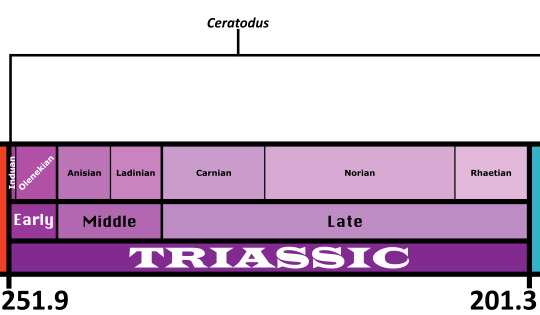
Ceratodus is known from the United States, Peru, Uruguay, Greenland, Svalbard, South Africa, Madagascar, Morocco, Libya, Mali, Niger, Egypt, Sudan, Saudi Arabia, France, Spain, Switzerland, Liechtenstein, Germany, England, Russia, India, Mongolia, Thailand, and Australia.

Physical Description: Ceratodus is... a lungfish. Most of the fossil remains are distinctively-shaped teeth. These teeth are multicusped and in life would be incorporated into a solid crushing surface with other tissues in the mouth. Externally it would have looked very much like the Queensland lungfish. In fact, it used to be considered a species of Ceratodus, until it was moved to the genus Neoceratodus in 1977. Ceratodontiform morphology has changed little in the intervening time. Look at a lungfish and you know what Ceratodus was like.
Diet: Ceratodus would have eaten fish, small amphibians, a variety of invertebrates, and possibly plant matter, much like its living relative.
Behavior: Ceratodus is probably best compared to a fallen log. It would have sat quietly at the bottom of calm waters, waiting for food to come on by. It was likely primarily nocturnal, and more mobile at night. As a lungfish, it would have been able to breathe air, and thus would be able to survive its habitat drying up. Going off its modern relatives, it may have been able to live for absurdly long periods of time if left alone - captive Queensland lungfish can and have reached their 90’s.
Ecosystem: Ceratodus fossils are known from pretty much everywhere. In the Triassic, Ceratodus is known from North America, Europe, western Asia, India, and Australia. Most Ceratodus-bearing habitats were marshlands or other calm freshwater environments. Other Ceratodus-bearing sites are marine, meaning the Ceratodus found there were probably washed out to sea. The seasonal wetlands Ceratodus probably favored were also frequented by sharks such as Hybodus and xenacanthids, ray-finned fish, temnospondyls, and phytosaurs. The exact species vary by location; in North America, Ceratodus lived alongside phytosaurs like Rutiodon and Smilosuchus, while in Eurasia temnospondyls such as Metoposaurus and Cyclotosaurus were more common. Of course, many land-living animals would have come by these rivers to drink, such as cynodonts, rhynchosaurs, pseudosuchians, and early dinosaurs. To go more in-depth would make this article three times as large as it currently is.
Other: There’s a town in Queensland called Ceratodus.
~ By Henry Thomas
Sources under the Cut
Case, E.C. 1921. A new species of Ceratodus from the Upper Triassic of western Texas. Occasional Papers of the Museum of Zoology, University of Michigan 101: 1-4.
Gunther, A.C.L.G. 1871. Description of Ceratodus, a genus of ganoid fishes, recently discovered in rivers of Queensland, Australia. Philosophical Transactions of the Royal Society 161: 511-571.
Kemp, A. 1993. Ceratodus diutinus, a new ceratodont from Cretaceous and Late Oligocene-medial Miocene deposits in Autralia. Journal of Paleontology 67 (5): 883-888.
Martin, M, Ingavat, R. 1982. First record of an upper Triassic ceratodontid (Dipnoi, Ceratodontiformes) in Thailand and its paleogeographical significance. Geobios 15 (1): 111-114.
http://www.paleobiodb.org
#Ceratodus#lungfish#Dipnoi#sarcopterygian#lobe finned fish#Triassic#Triassic madness#triassic march madness#prehistoric life#prehistory#paleontology
236 notes
·
View notes
Text

A Triassic lungfish tooth plate, likely an Arganodus atlantis or Ceratodus arganensis from the Argana Group in the Argana Basin of Morocco. Arganodus has sometimes been synonomized with the genus Asiatoceratodus. This specimen comes from a very old French collection from the 1960s and unfortunately lacks detailed locale information.
#fish#lungfish#dipnoi#fossils#paleontology#palaeontology#paleo#palaeo#arganodus#ceratodus#asiatoceratodus#arganodontidae#ceratodontidae#asiatoceratodontidae#triassic#mesozoic#prehistoric#science#paleoblr#アルガノドゥス#ケラトドゥス#アジアトケラトドゥス#ハイギョ#アルガノドゥス科#ケラトドゥス科#アジアトケラトドゥス科#化石#古生物学
132 notes
·
View notes
Text
Round 2 Final Stats:
Previously I said any group to earn over 900 points will move on to Round 3, however, I’m going to make it the Top 10 just to make it even. Plus, what’s an extra two species?
For the final stats, I’ve made a little graphic with some doodles to remind y’all what each class is. (Couldn’t use emojis for everyone because, alas, there are not enough unique ones to represent all these animal groups!) The full list is typed out under the read more though, as well as the extra stats for this round!
The top classes (or phylogenetic equivalents) have been ranked thusly, listed here from highest ranking to lowest:

🦈 Chondrichthyes ~ 1,509
🐀 Mammalia ~ 1,437
🐍 Reptilia ~ 1,183
🐙 Cephalopoda ~ 1,175
🐸 Lissamphibia ~ 1,002
🐠 Actinopterygii ~ 983
🦀 Malacostraca ~ 954
🕷 Arachnida ~ 913
🐞 Insecta ~ 908
Actinistia ~ 853
🐌 Gastropoda ~ 796
🫁 Dipnoi ~ 598
🦪 Bivalvia ~ 507
Myxini ~ 492
Chilopoda ~ 479
Branchiopoda ~ 443
Polyplacophora ~ 427
Petromyzontida ~ 412
Pycnogonida ~ 405
Copepoda ~ 308
Ascidiacea ~ 394
Diplopoda ~ 393
Ostracoda ~ 278
Collembola ~ 272
Thecostraca ~ 253
Pauropoda ~ 246
Appendicularia ~ 229
Leptocardii ~ 222
Remipedia ~ 194
Symphyla ~ 166
Solenogastres ~ 164
Tergomya ~ 158
Scaphopoda ~ 142
Tantulocarida ~ 139
Cephalocarida ~ 134
Mystacocarida ~ 115
Caudofoveata ~ 110
Diplura ~ 94
Protura ~ 83
Ichthyostraca ~ 83
Our Top 10 Classes are Chondrichthyes, Mammalia, Reptilia, Cephalopoda, Lissamphibia, Actinopterygii, Malacostraca, Arachnida, Insecta, and Actinistia!
This means Chondrichthyes, Mammalia, Reptilia, Cephalopoda, Lissamphibia, Actinopterygii, Malacostraca, Arachnida, Insecta, and Actinistia will be moving on to Round 3, and broken up by Order (or some other phylogenetic equivalent).
Extra Stats:
Arthropod Class Pycnogonida (“sea spiders”)
~ was the first group of Round 2
~ was the first arthropod group of Round 2
~ had the highest amount of dislikes at 20
~ had the highest amount of hates at 5
Arthropod Class Symphyla (“garden centipedes”)
~ had the highest percentage of likes at 45%
Arthropod Class Ichthyostraca (“fish lice” and “tongue worms”)
~ had the highest percentage of dislikes at 9.1%
~ had the highest percentage of hates at 2.6%
Arthropod Class Mystacocarida (“mustache shrimp”)
~ had the lowest amount of loves at 13
~ had the lowest percentage of loves at 7.9%
~ had 0 hates
~ had the least reblogs at 8
~ had the least notes at 21
Arthropod Class Ostracoda (“seed shrimp”)
~ had 0 hates
~ received exactly 200 votes
Arthropod Class Copepoda (copepods)
~ had 0 hates
Arthropod Class Malacostraca (“crabs”, “lobsters”, “shrimp”, etc)
~ had the third most reblogs at 55
~ had the highest percentage of loves at 52.8%
~ had 0 dislikes and 0 hates
~ was the highest ranked Arthropod class
Arthropod Class Tantulocarida (tantulocarids)
~ had the highest amount of neutral votes at 91, along with Caudofoveata
Arthropod Class Cephalocarida (“horseshoe shrimp”)
~ had 0 hates
Arthropod Class Remipedia (remipedes)
~ had 0 hates
Arthropod Class Collembola (“springtails”)
~ had 0 hates
Arthropod Class/Order Protura (“coneheads”)
~ had the least votes at 125
~ had the lowest amount of favorites at 1
~ had the lowest percentage of favorites at 0.8%
~ had 0 hates
Arthropod Class Insecta (insects)
~ had 0 dislikes
Chordate Class Leptocardii (“lancelets”)
~ was the first Chordate group of Round 2
~ had 0 hates
Chordate Class Ascidiacea/Thaliacea (“sea squirts”, “salps”, “pyrosomes”, etc.)
~ had 0 hates
Chordate Class Appendicularia (“larvaceans”)
~ had 0 hates
Chordate Class Chondrichthyes (“cartilaginous fish”)
~ had the most votes at 415
~ had the highest amount of loves at 181
~ had 0 dislikes and 0 hates
~ had the most reblogs at 105
~ had the most notes at 235
~ was the highest ranked group of chordates
Chordate Class Actinistia (“coelacanths”)
~ had 0 dislikes and 0 hates
~ was the first single genus (Latimeria) to be ranked
Chordate Class Dipnoi (“lungfish”)
~ had the highest amount of likes at 104
~ had 0 dislikes and 0 hates
~ contained the first of my personal favorites (Australian Lungfish) to be eliminated 🥲
Chordate Class Lissamphibia (amphibians)
~ had the lowest amount of neutral votes at 1, along with Reptilia and Gastropoda
~ had the lowest percentage of neutral votes at 0.4%, along with Reptilia and Gastropoda
~ had 0 dislikes and 0 hates
Chordate Class Reptilia (reptiles)
~ had the lowest amount of neutral votes at 1, along with Lissamphibia and Gastropoda
~ had the lowest percentage of neutral votes at 0.4%, along with Lissamphibia and Gastropoda
~ had 0 dislikes and 0 hates
Chordate Class Mammalia (mammals)
~ had the highest amount of favorites at 258
~ had the highest percentage of favorites at 80.6%
~ had the lowest amount of likes at 4
~ had the lowest percentage of likes at 1.2%
Molluscan Class Polyplacophora (“chitons”)
~ was the first Mollusc group of Round 2
~ had 0 hates
Molluscan Class Solenogastres (solenogasters)
~ had 0 hates
Molluscan Class Caudofoveata (caudofoveatans)
~ had the highest amount of neutral votes at 91, along with Tantulocarida
~ had the highest percentage of neutral votes at 58%
Molluscan Subclass Tergomya (tergomyans)
~ had 0 hates
Molluscan Class Cephalopoda (cephalopods)
~ had the second most reblogs at 66
~ had 0 dislikes and 0 hates
~ was the only molluscan class to make it into the Top Ten
Molluscan Class Scaphopoda (“tusk shells”)
~ had 0 hates
Molluscan Class Gastropoda (“snails” and kin)
~ had 0 dislikes and 0 hates
~ had the lowest amount of neutral votes at 1, along with Lissamphibia and Reptilia
~ had the lowest percentage of neutral votes at 0.4%, along with Lissamphibia and Reptilia
Molluscan Class Bivalvia (bivalves)
~ had 0 dislikes
#Thanks for voting!#Statistics#extras#poll results#round 2#I’ve made my peace with most of these but#i’m still grumpy about the millipedes tho#like really#y’all put copepods higher than them#also what happened to all the people who got arthropoda to win the first round#where’d you go#to be clear though I AM happy for the ones who did move forward#i am very proud to still have arachnids with us#and I’m excited to vote on all the different birds and insects#we can’t just do all of them or I’d be here all day lol
62 notes
·
View notes
Photo










Photoset 1 from the Melbourne Museum with @captain-amaezing!
1. Cast of Inostrancevia, a Permian gorgonopsid and a relative of ours
2. A beautiful Banded Iron Formation with pyrite. My finger there for scale.
3. Phar Lap, the famous Australian racehorse.
4. A paper-mache(!!!) model of the human body. If that wasn’t labor intensive enough, it opens up to show the internal organs.
5. Neoceratodus forsteri, or the Queensland lungfish. One of the few surviving lungfish, this guy is truly a living fossil.
6. The magnificent skull of Physeter macrocephalus, or the sperm whale.
7. The skull of Janjucetus, a stem mysticete with teeth!
8. Aboriginal sculpture of my favorite marsupial, the tassie devil.
9. A quality rancho.
10. The arching skull of the pygmy blue whale, a subspecies, Balaenoptera musculus brevicauda.
(Part 1) (Part 2)
#Maru's adventures down unda#Melbourne Museum#Therapsida#Gorgonopsia#BIF#Geology#Anatomy#Equidae#Dipnoi#Sarcopterygii#Cetacea#dasyuromorphia#Maruchelys OP#photo
84 notes
·
View notes
Text
what was previously thought to be an uninhabited land is now bursting with Dipnoi, a forgotten race who burrow into soft earth during times of drought or danger. a greedy king had bought the land and demands that the dipnoi be removed or even executed for trespassing. the players have been recruited for the task and must choose between dooming an innocent race or facing the wraith of the king.
#rpg ideas#sea rpg ideas#(Dipnoi is the scientific name for lungfish if you dont wanna google)#my queue is good for a few days now! i'll obvi add more later but im just saying there'll be new post everyday for like a week now?
27 notes
·
View notes
Note
What is your favorite uncharismatic fauna?
lungfish! particularly the australian lungfish but i love all the dipnoi bois with my entire heart

#lungfish#australian lungfish#i know some nerd is going to come for me like they did with the deep sea weirdos post and be like 'lungfish arent uncharismatic!!!'#i personally find them extremely charasmatic and loveable (particularly after working with them)#but im using the conservation bio definition of charismatic species that references public opinion more than anything#wherein almost nothing aside from large endangered mammals are included
15 notes
·
View notes